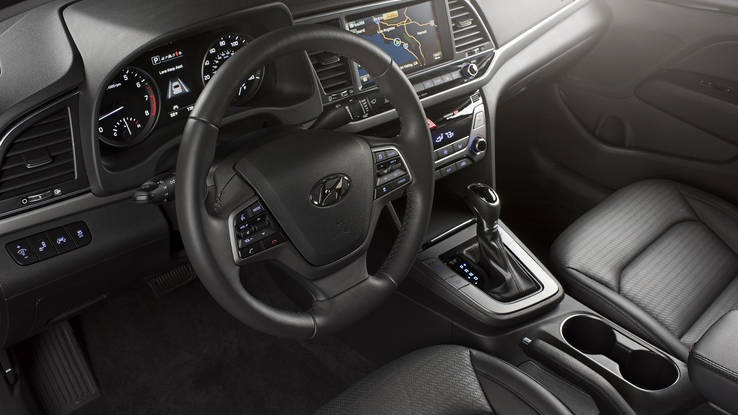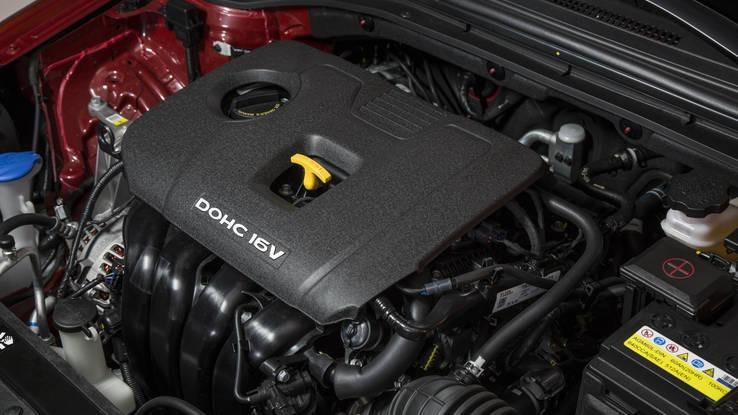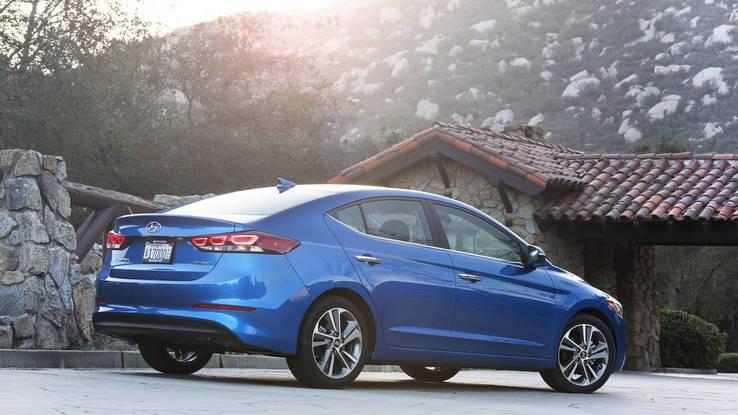Latest Elantra continues to refine the formula that’s made it a success
What is it? The fifth-generation Hyundai Elantra was a hottie. When it debuted for the 2011 model year, it had sleeker metal than just about any other compact sedan, and that sporty design and youthful image helped propel the nameplate past many of its rivals. Last year, Hyundai moved more than 241,000 Elantras — good enough to place third in the sales race right behind the two perennial leaders, the Toyota Corolla and Honda Civic.
Compared to the rest of the car market, compacts are booming — this is a good spot to have a strong competitor. Dave Zuchowski, president and CEO of Hyundai Motor America, says buyers who might have chosen a sub-compact a few years ago are moving up to compact. “For not that much more money you get significantly more car, content and value,” he says. “We are absolutely seeing that shift.” As a result, more than 2.2 million compacts were sold last year. Despite tough new competition, Hyundai wants to maintain the market position it worked so hard carve out, meaning the latest Elantra is a safe play.
“We really pushed the envelope on the last generation,” says Zuchowski. “This one is an evolution. It’s a very handsome, stylish design but it isn’t a huge departure from what we’ve done before.”
Indeed, the new Elantra looks like a muted and less aggressive version of the old car. The deep creases along the body sides and flared wheel arcs are much less pronounced. The headlamps and windshield aren’t angled quite as radically. And the lower bodywork is less sculpted, making the car look a little less playful, less fun even. Regardless, the new shape is deceptively slippery and achieves an improved coefficient of drag of 0.27.
Beneath the metal, the new Elantra shares a quite a bit with the old car, including the same floorpan. The 106.3-inch wheelbase remains consistent with the previous model, as does the track width, yet it’s about an inch longer and wider overall. The unibody structure has been redesigned with more than double the percentage of high-strength steel, and any of those elements are bonded with adhesives that provide a stiffer, quieter structure with better crash performance. That’s because both the part and the bond are stronger, according to Ana Wagner, global strategic marketing manager of adhesive supplier Dow Chemical. As you’d expect, all this strengthening means the new Elantra is almost 30 percent stiffer in torsion and more than 25 percent in bending.

2017 Hyundai Elantra
There is no great revolution in suspension design here. The Elantra still uses Macpherson struts up front and a twist beam rear axle. Even the diameter of the front swaybar is the same 22 millimeters as the old car. However, the rear dampers are now mounted vertically instead of tipped back, which Hyundai says improves ride and handling — it also likely contributes to a trunk that’s shrunk from 14.8 cubic feet to 14.4 cubic feet. Oddly, every version of the previous Elantra had standard four-wheel disc brakes, but now SE and Eco models have drums in the back. Only the top Limited models receive a disc at each corner.
Engineers focused much of their time finding places to make the new Elantra quieter; the front suspension is now mounted to a subframe for isolation. Other countermeasures include a new dash panel with smaller holes (so less noise passes through), denser carpet foam, a sound absorbing rear wheel liner and thicker door glass. Hyundai says all this makes the Elantra one of the quietest cars in the class.
Under the hood is the company’s new “Nu” 2.0-liter Atkinson-cycle I-4 with 147 hp and 132 lb-ft of torque. That’s a very mild bump of 2 hp and 2 lb-ft. of torque over the current 1.8-liter but with an improvement in fuel efficiency. And this 2.0-liter is mated to a standard six-speed manual or a six-speed automatic. Why no CVT? Hyundai says that while the best CVTs try to mimic a stepped gear transmission, the six-speed provides an experience customers are used to. And that’s just fine by us.
At launch, the Elantra will come in two flavors: SE and Limited. The Eco model will join the lineup soon after, and this fall a Sport model will arrive. One of the best deals is the $ 800 “Popular Equipment Package,” which adds goodies like big 7-inch touchscreen, rear camera, 16-inch wheels, cruise control and heated mirrors to the base car. Add the automatic transmission for $ 1,000 and the Elantra will still squeak under $ 20,000. Top spec models with the “Limited Ultimate Package” like the ones we drove bring safety technology one might not expect in this class, like automatic emergency braking with pedestrian detection, smart cruise control, and even a lane keeping assist system. But even with every option checked, the Elantra won’t hit $ 28,000.

2017 Hyundai Elantra
What’s it like to drive?
Imagine driving around in a previous generation Elantra wearing noise-cancelling headphones and you’ve got a good idea of what its like to drive this new one. It’s quieter with far less road and wind noise entering the cabin. Overall, it feels more refined too. The old 1.8-liter four-cylinder didn’t seem particularly loud or coarse until we drove the new Elantra. The new 2.0-liter is not only quieter but sounds sweeter. Plus, it generates peak power and torque lower in the rev range than the old engine, so this larger 2.0-liter is never working quite as hard to move the Elantra. Still, with roughly the same power ratings, transmission gears and similar weight to shuttle around, the 2017 Elantra seems no quicker then the old model.
However the new Elantra does feel more planted and stable on the road; that’s especially true on the freeway. Perhaps some of the improvement comes from better tuning of the electric power steering. Our leather-lined Limited test car also had the ability to change drive modes between normal, sport and eco. And though changes are made to throttle and transmission mapping, most noticeable is the steering weight, which feels meatier in Sport mode. There’s really no reason to use any other mode.
One look at the dash of the new Elantra and it’s clear where designers took their inspiration—the Sonata. The new look is a scaled down version of Hyundai’s midsize sedan, with a large central screen that measures either 7-inches on most models or 8-inches with navigation. The tiny buttons, cubbies and switches of the old Elantra are replaced with far more substantial ones. Compared to the outgoing Elantra, the interior is more spacious, and the tape measure backs that up because there’s more shoulder room up front despite slightly less headroom. The old Elantra had a tighter rear seat than many of its rivals. No more. Space has improved in every dimension, especially in legroom, which has grown by 2.6 inches. And that rear seat can now be heated too.
We had a chance to put a few miles on a prototype Eco model using a turbocharged 1.4-liter “Kappa” engine with 128 hp at 5,500 rpm and 156 lb-ft of torque way down at 1,400 rpm paired to a 7-speed dual clutch transmission (DCT). Unlike the 2.0-liter model, this turbo powertrain feels torquey and satisfying like a larger turbo-diesel as you roll into the throttle. But floor the gas pedal and there is some lag from both the engine and transmission. Still, midrange thrust is excellent and the combo feels more interesting to drive than the 2.0-liter although probably no quicker. Hyundai projects this model will return 35 mpg combined.

2017 Hyundai Elantra
Do I want it?
Maybe. The Elantra is quiet, comfortable and delivers plenty of equipment at a good price. But those are not ingredients for a car we really want to drive on a twisty backroad. So if the idea of an Elantra that’s a little more entertaining sounds appealing — wait for the Elantra Sport coming this fall. Hyundai promises that the Sport will deliver around 200 hp, and we hear it will be a fairly serious package beyond just a more powerful engine and a firmer suspension. This is the Elantra we’re excited to drive.




























